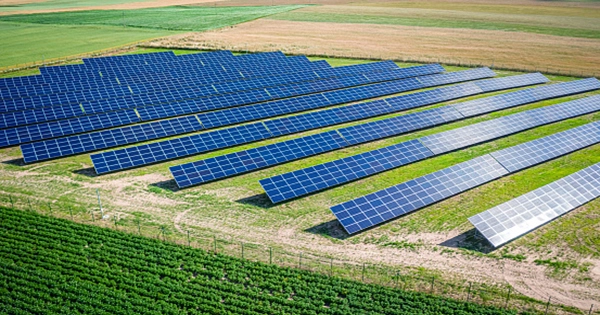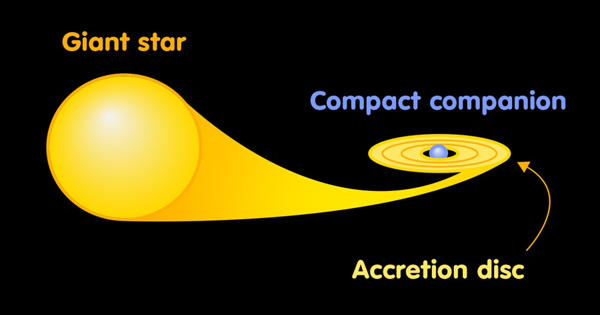According to reports, the UK government is mulling a £16 billion plan to create a solar power plant in space. That’s right, you read that correctly. One of the technologies included in the government’s Net Zero Innovation Portfolio is space-based solar power. It has been identified as a possible method, along with others, for the UK to attain net zero emissions by 2050.
But how would a space-based solar power station work? What are the benefits and disadvantages of this technology? Solar energy is collected in space and transferred to Earth via space-based solar power. While the concept isn’t new, recent technology advancements have made it more feasible.
A solar power satellite — a large spaceship outfitted with solar panels – is used in the space-based solar power system. The power generated by these panels is then wirelessly delivered to Earth through high-frequency radio waves. The radio waves are converted into energy using a ground antenna called a rectenna, which is subsequently fed to the power grid. The Sun illuminates a space-based solar power plant in orbit 24 hours a day, allowing it to generate electricity continually.
This is an advantage over terrestrial solar power systems (systems on Earth), which can only generate electricity during the day and are weather-dependent. With worldwide energy consumption expected to climb by over 50% by 2050, space-based solar power might play a critical role in meeting rising demand in the energy industry and combating global warming.
SOME DIFFICULTIES, A modular design for a space-based solar power plant is used, with robots in orbit assembling a vast number of solar modules. Transporting all of these materials into space is difficult, expensive, and environmentally damaging. Early on, the weight of solar panels was noted as a problem. However, the development of ultra-light solar cells has overcome this issue (a solar panel comprises smaller solar cells).
Because of advancements in critical technologies such as lightweight solar cells, wireless power transmission, and space robots, space-based solar power is considered theoretically possible. Importantly, even putting up a single space-based solar power plant will need several shuttle missions. Although space-based solar power is intended to minimize carbon emissions over time, there are considerable emissions as well as expenditures connected with space launches. Currently, space shuttles are not reusable, while firms such as Space X are striving to change that. The cost of space-based solar electricity would be greatly reduced if launch vehicles could be reused.
Even if we are successful in building a space-based solar power plant, its operation will be fraught with difficulties. Space debris may cause harm to solar panels. Furthermore, space panels are not protected by Earth’s atmosphere. Because they are exposed to more intense solar radiation, they will decay quicker than those on Earth, reducing the amount of electricity they can create. Another difficulty is the efficiency of wireless power transfer. It’s difficult to send energy across long distances, such as from a solar satellite in orbit to the earth. Only a small proportion of the solar energy gathered would reach the Earth with present technologies.
PILOT PROJECTS ARE CURRENTLY IN PROGRESS. The Space Solar Power Project in the United States is working on high-efficiency solar cells as well as a space-optimized conversion and transmission system. In 2020, the US Naval Research Laboratory conducted a space test of a solar module and power conversion device. Meanwhile, China has declared that work on the Bishan space solar energy station is progressing, with a goal of having a working system by 2035. According to a recent Frazer-Nash Consultancy assessment, a £17 billion space-based solar power development is a realistic idea in the UK. The project will begin with short trials and end with a fully operating solar power station in 2040.
The solar power satellite would have a diameter of 1.7 kilometers and a mass of 2,000 tons. The terrestrial antenna is large, measuring around 6.7km by 13km. Because of the widespread usage of land in the UK, it’s more likely to be located offshore. The UK would get 2GW of power from this satellite. While this is a significant quantity of energy, it only makes up a small part of the UK’s total generation capacity, which is roughly 76GW. With such large starting expenses and a slow return on investment, the project would require significant government resources as well as private sector funding.
However, as technology improves, the cost of space launch and production will continue to drop. Furthermore, because of the project’s size, mass manufacturing will be possible, lowering costs. It remains to be seen if space-based solar power can help us reach net zero by 2050. Other technologies, such as diversified and flexible energy storage, hydrogen, and renewable energy system expansion, are better understood and can be implemented more quickly.
Despite the difficulties, space-based solar power represents an interesting research and development opportunity. The technology is projected to play a significant role in global energy supply in the future. Head of the University of Portsmouth’s School of Mechanical and Design Engineering, Jovana Radulovic. The Conversation has given permission to reprint this article under a Creative Commons license. Read the full story here.
















